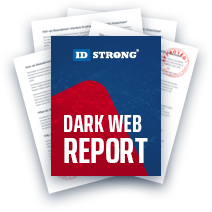RCE has the Potential to be Triggered by ICS Flaws
Table of Contents
- By Steven
- Published: Jun 01, 2022
- Last Updated: Jun 01, 2022
Flaws described as “critical” within the widely used ICS platform have the potential to catalyze RCE into action. RCE is an acronym commonly used by those in the tech world to refer to remote code execution. Let’s take a closer look at why ICS flaws that have the potential to lead to RCE are problematic.
Who Discovered the Problem?
Digital security specialists with Cisco Talos identified the vulnerabilities. Eight such vulnerabilities were identified. Additionally, the weaknesses were pinpointed within the Open Automation Software. Exactly two of the vulnerabilities are considered critical, meaning they carry significant risk in the context of infrastructure networks critical to functionality.
Critical flaws within such a platform are manipulated by industrial control systems, or ICS for short, that permit access to devices that are unauthorized or RCE.
Critical flaws can even lead to denial of service, making the overarching critical infrastructure much less secure.
The Cisco Talos researcher responsible for identifying the weaknesses is named Jared Rittle. Two of the vulnerabilities identified by Rittle are within the Open Automation Software Platform, or OAS for short. Rittle noted how one of the vulnerabilities presents an opportunity for digital miscreants to execute arbitrary code on specific machines.
Why is the Risk so Significant?
The OAS platform is the underlying cause of the risk. Such devices are often responsible for the processes necessary for manufacturing and utility businesses, meaning they are that much more important. If a hacker were to disrupt such operations, the ramifications could prove detrimental to private industry and the public as a whole.
ICS attacks are especially threatening as they are not always obvious after implementation. For example, the Stuxnet worm that appeared a decade ago was an ICS threat. In fact, digital security professionals insist Stuxnet serves as a case study on such risks as it went undetected for a lengthy period. Stuxnet did not quickly break the targeted industrial control devices yet altered their functionality to spur the failure of critical industrial components while simultaneously reporting that operations were moving along normally.
What are the Specific Vulnerabilities of Note?
According to representatives with Cisco Talos, the flaw with the most critical rating with a 9.4 CVSS score has two monikers for tracking, one with a CVE prefix and the other with a TALOS prefix. Another threat has a 9.1 CVSS rating, functioning as a file write vulnerability that has the potential to permit a threat to implement arbitrary code on a machine through a string of highly nuanced network requests.
The remainder of the vulnerabilities identified by Cisco Talos have high severity level ratings. One such vulnerability can empower digital attackers to obtain directory listings permissible through the transmission of certain network requests. A separate flaw works similarly yet provides the hacker with a username and password list to be used in subsequent attacks. Finally, the remaining two vulnerabilities of note have the potential to empower hackers to process external configuration alterations, such as creating additional security groups and new user accounts.
What is Being Done to Resolve the Issue?
Cisco Talos is hard at work on resolving these digital security flaws The company has encouraged those affected to remain patient, implement sufficient network segmentation, and update their system to guard against potential threats.



















































































































